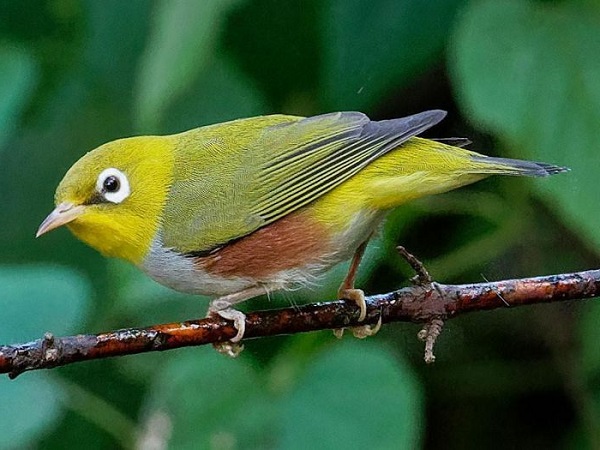News
Silver-eared Mesia
The Silvereye (also known as Zosterops) is a bird species with an attractive appearance, which has garnered much attention from bird enthusiasts. So, what exactly is the Silvereye? This bird belongs to the order Passeriformes and the family Zosteropidae.
Silvereyes are primarily found in warm tropical regions, notably in areas like Africa, Australia, and New Zealand. They are also found in parts of Southeast Asia, including Vietnam, where there is a large population.
The average lifespan of a Silvereye is about 4 to 7 years, but with proper care, they can live up to 10 years.
Characteristics of the Silvereye
Appearance: Among bird species, the Silvereye is considered one of the more attractive ornamental birds. It has a small body, similar to that of a sparrow, with a large head, broad forehead, yellow beak, and deep mandibles. Its eyes are sharp and slightly angled. Surrounding the eyes is a white ring. The bird’s wings are rounded, and its legs are strong.
Additionally, the Silvereye’s feathers are fine, short, glossy, and soft. The two main feather colors are yellow and green. The yellow variety is generally more docile and less agile, often found in the southern regions. Meanwhile, the green variety, known for its distinctive green color, is faster and more agile, with a beautiful song. This variety is more commonly found in the northern, cooler regions.
Reproduction
Silvereyes typically live in large flocks in the wild but separate when it is breeding season. The breeding season generally starts from March and lasts until July. They build their nests in trees, and each clutch typically contains 2 to 4 eggs. The male takes on the responsibility of foraging for food, while the female incubates the eggs. After 14 to 15 days of incubation, the eggs hatch into chicks.
Song
The Silvereye is known for its captivating song. It has a clear, high-pitched, and pure voice. Notably, these birds can mimic the calls of other birds, such as the Oriental Magpie-Robin. To choose a good singing bird, look for one with a large yellow beak, deep mandibles, fine feathers, and a lively demeanor, as these typically make the best singers.
Care Tips for Silvereyes
Here are some effective tips for taking care of Silvereyes:
Diet: When keeping Silvereyes, it’s important to provide a well-balanced diet. They generally enjoy grains, bird feed, insects, and some fruits.
Insects that are high in protein, such as crickets and larvae, as well as fruits like oranges, tomatoes, cucumbers, carrots, and bananas, are good food options for Silvereyes.
During their care, it’s best to maintain a consistent type of bird feed to avoid nutritional imbalances. Depending on their growth stages, their care may need to be adjusted.
When the birds are moulting, their nutritional needs increase. In this case, adding green bean feed mixed with eggs and larvae is a good option, along with providing brightly colored fruits to help them grow healthier feathers.
Cage: Silvereyes are small birds, so their cages do not need to be large. A medium-sized cage is suitable, allowing them to fly freely. You can choose cages made from wood, bamboo, or stainless steel.
Bathing: You can set up a separate bath for the Silvereye. During bath time, use a mist spray to moisten their feathers. The bird will clean itself naturally. Avoid using a strong spray, as this could frighten the bird.
Preventing Illness: One of the most important aspects of caring for Silvereyes is disease prevention. These birds can be susceptible to bacterial infections, parasites, diarrhea, and other illnesses. It’s essential to maintain their health by using appropriate bird medicines and keeping their cage clean daily. Ensure they have access to clean food and water.

